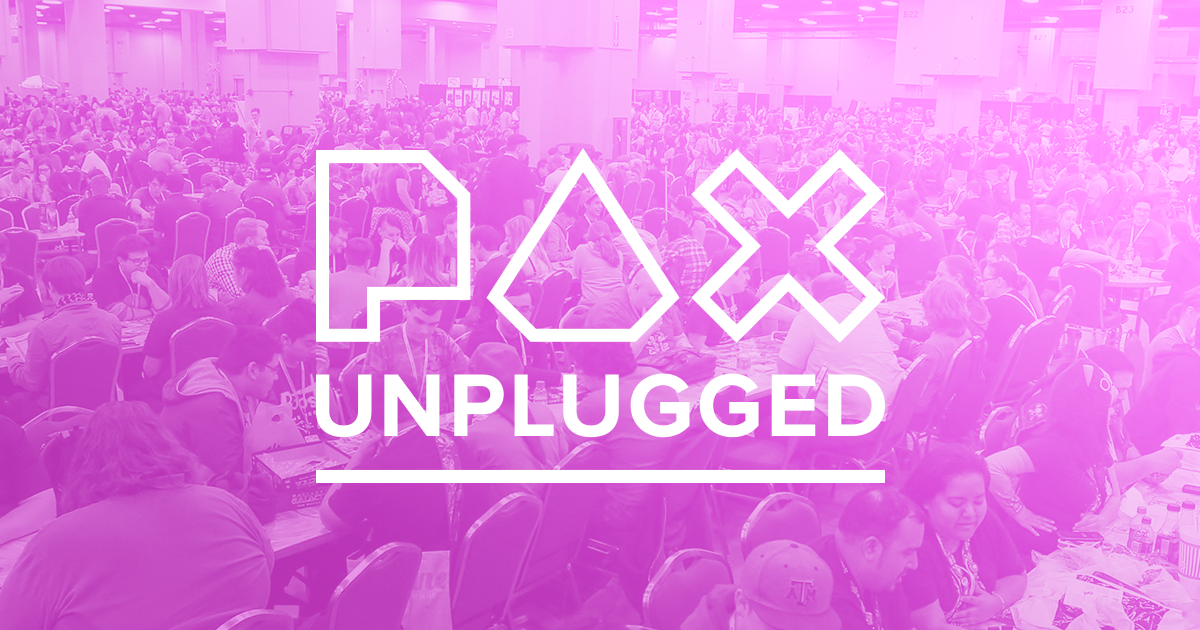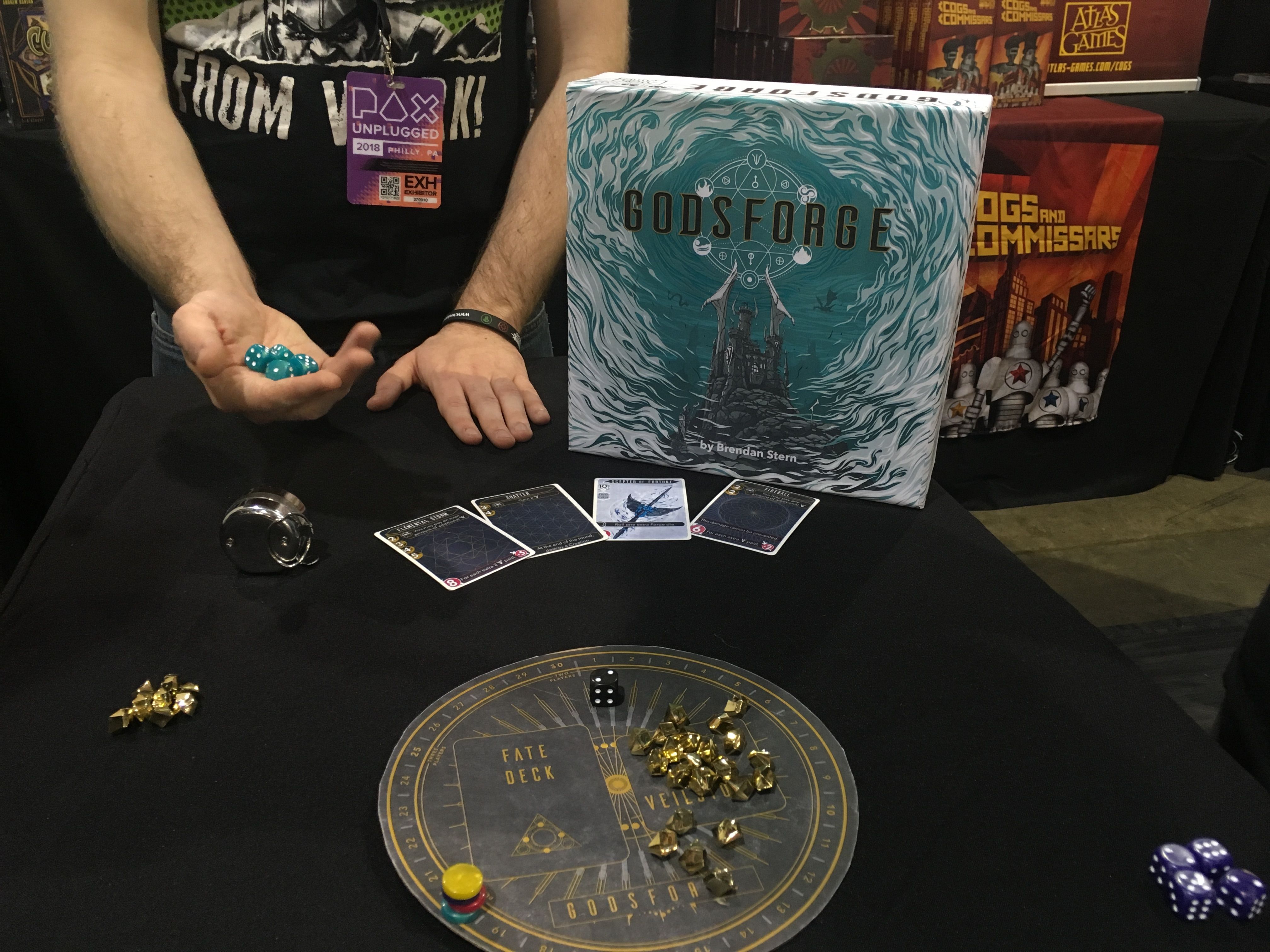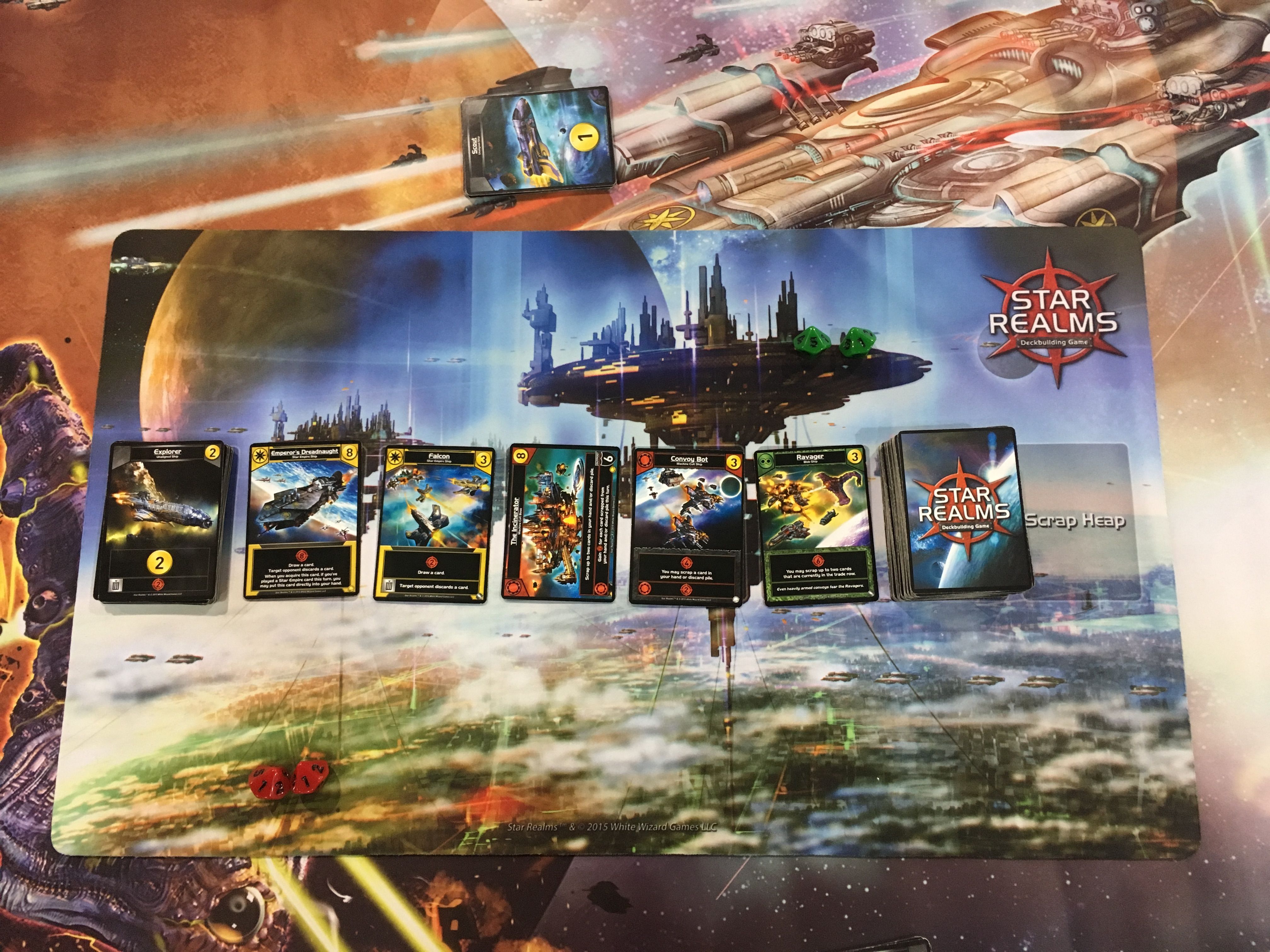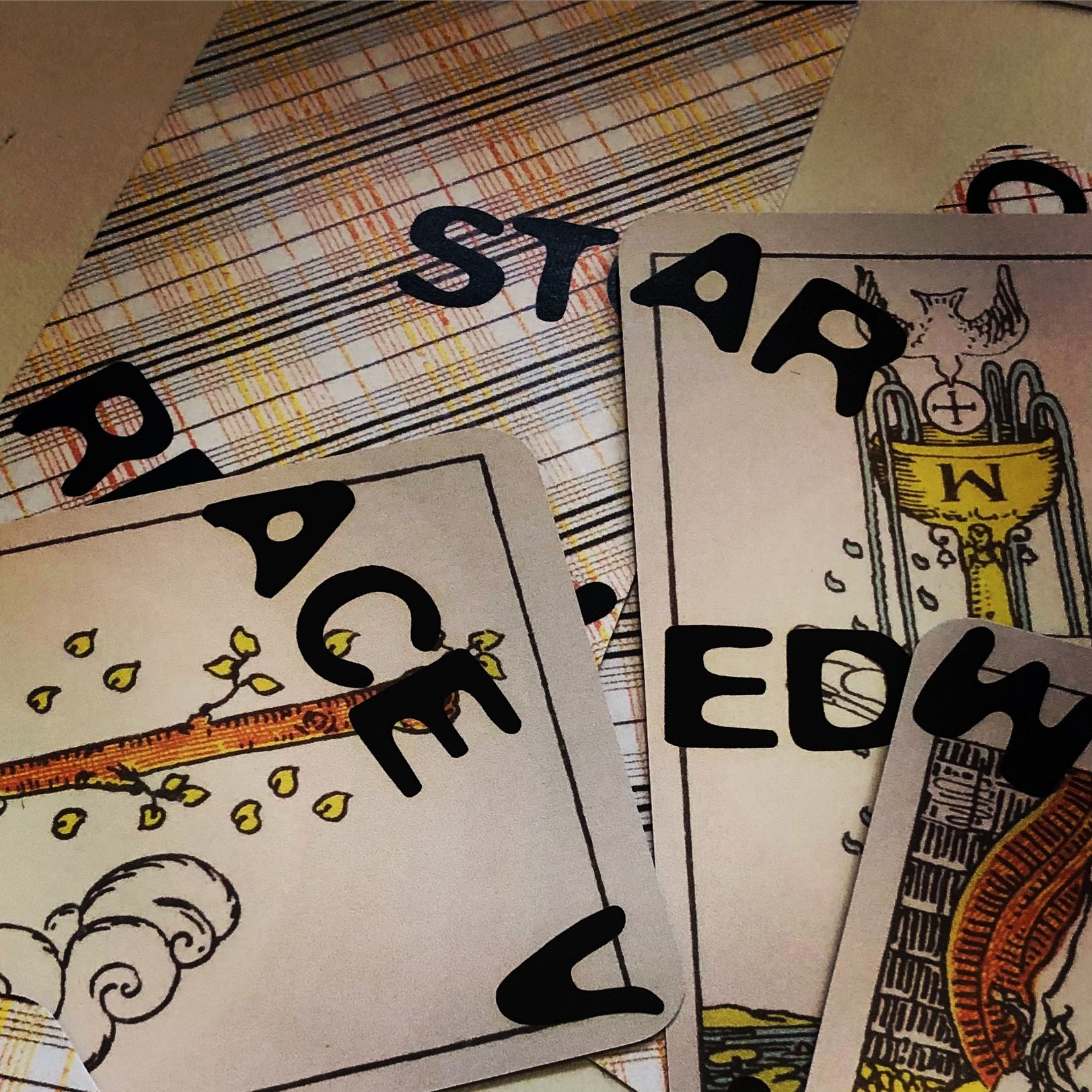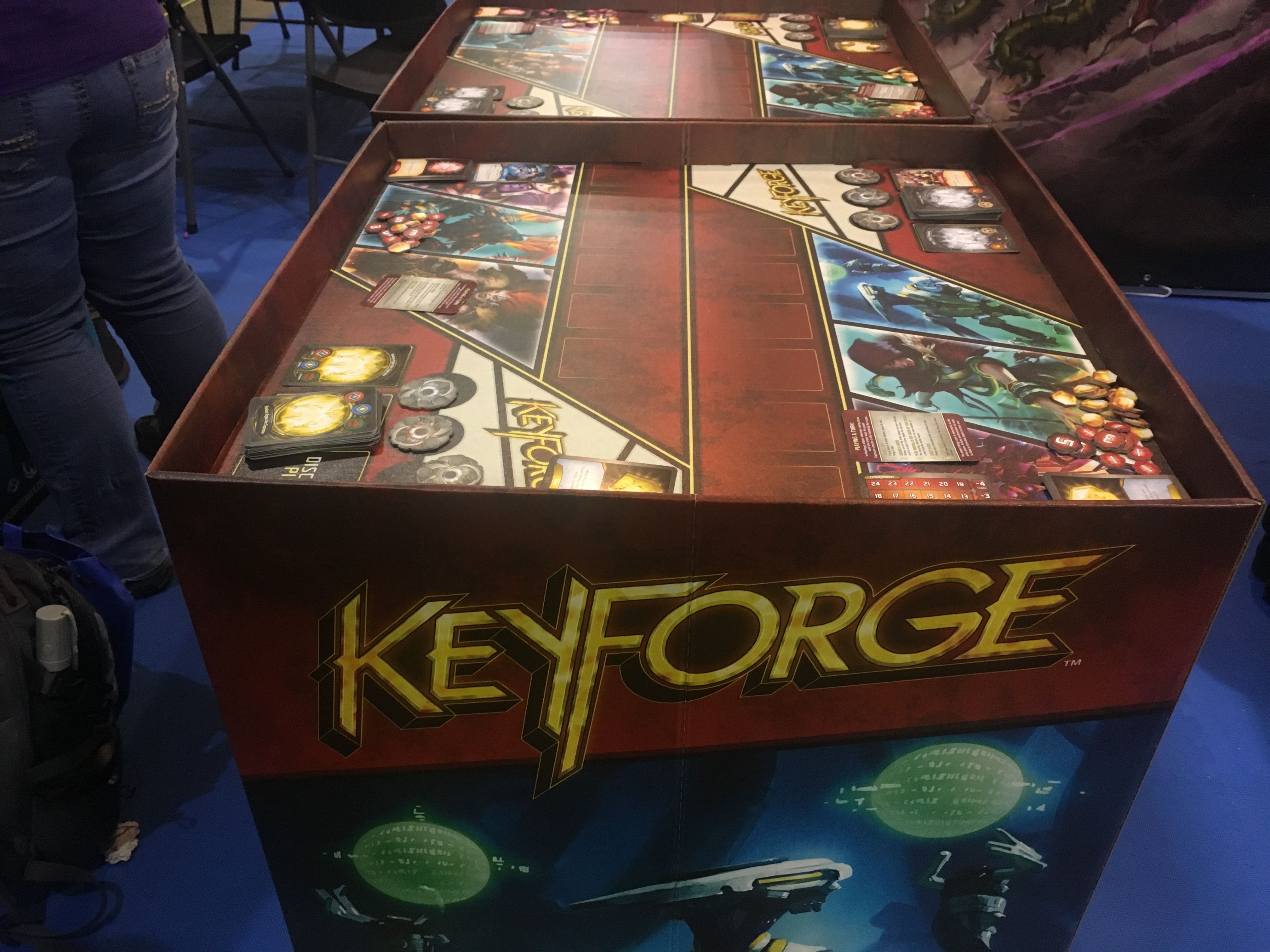The first thing you’ll notice when walking into PAX Unplugged, the tabletop gaming convention from Penny Arcade, is that the whole thing is quite literally unplugged. Ditching the ubiquitous, towering high-definition screens of Comic-Con, E3, and other traditional PAX conventions, PAX Unplugged is much kinder on the senses than other types of gaming conventions.
PAX Unplugged 2018 ended almost a month ago, and yet, I can't stop thinking about the tabletop games I had the opportunity to play there. In a busy holiday season littered with familial obligations and beefy single-player video game releases, PAX Unplugged reminded me of the camaraderie and fellowship that accompanies tabletop gaming. Sometimes, especially around the holidays, it's nice to cut the cord and pull up a chair around the table. PAX Unplugged seamlessly gave me that experience with some top-tier tabletop games to boot.
Without any further ado, here are some of the games I played at PAX Unplugged that have stuck with me in one way or another.
Godsforge
Godsforge is an upcoming game from Brendan Stern where players take on the role of magical blacksmiths that are able to conjure creatures and spells. Effortlessly blending high-fantasy lore with Yahtzee-inspired dice mechanics, Godsforge hits a magnificent stride between luck and skill oriented gameplay styles.
The core gameplay loop of Godsforge is pretty simple—players simultaneously roll four dice, trying to roll the dice values present on the card they wish to activate. If they’re not happy with the results of their roll, they may reroll any number of dice two times or spend veilstones (Godsforge’s in-game currency) to augment the values of their dice. The creatures and spells activated with these rolls offer a large array of outcomes from providing health, giving players a shield, attacking the player to the left, or granting players a temporary or permanent effect. The only way to win Godsforge is to be the last man standing, or if every player dies, end up with the least negative health points.
One of the coolest things about Godsforge is the way that it unravels at the end of each match; once one player is eliminated, surviving players take a hearty seven damage each round until the game is over. This mechanic ensures that games won’t drag out, and more importantly, that your fellow players won’t have to wait too long to get back in on the action. Considering that all of the actions in the game take place simultaneously, every facet of Godsforge seeks to keep all players at the table engaged at all times.
Godsforge is expected to come out in the second quarter of 2019.
Star Realms: Frontiers
I have to be honest—I didn’t think I could play a deck-building game in 2018 that would make me desperate to jump back into the genre. Burnout from (fantastic) games like The Lord of the Rings: Fellowship of the Ring Deckbuilding Game and Tyrants of the Underdark made me prioritize more board-oriented wares in my search for my next tabletop purchase. That’s why I was so surprised when I fell in love with Star Realms Frontiers, a space-themed deck-building game that does everything right.
It’s important to note that Star Realms: Frontiers didn’t introduce me to any new deck-build mechanics or features: in no way did the game change what I thought about the deck-building genre or change my outlook on it. However, that being said, Star Realms: Frontiers feels like the perfect amalgamation of the genre—it understands what works, what doesn’t work, and trims the excess fat off what makes similar titles feel sluggish and unbalanced. This doesn’t come as much of a surprise; after all, Star Realms Frontiers is a soft-reboot and a rebalancing of 2014’s Star Realms. Labeled as a standalone expansion, Frontiers rebalances the original Star Realms’ formula and provides an incredibly streamlined, ultimately rewarding deck-building experience.
Star Realms: Frontiers’ play begins like every other deck-building game; players are given starting cards that either contain currency (called Trade) or deal damage (called Combat) to other players. Using this starting currency, players buy additional cards (made up of ships and bases) from the game’s in-game market that are then placed into their discard piles and shuffled into their deck when necessary.
Like a lot of deck-building games, Star Realms Frontiers contains a ton of in-game synergy; however, in Star Realms: Frontiers this synergy is color-coded. Red Faction cards will buff other red Faction cards, while blue Faction cards generally help other blue Faction cards. While this may seem overly simple, you still have to balance card acquisition with having enough Trade, as well as watching out for opponents stocking up on the same Factions.
One of my favorite aspects of Frontiers is its bases. Unlike ships, which upon being used are discarded, bases stay in front of players until they’re destroyed. Some of these bases contain gray shields, shields that protect the base from a certain threshold of damage: other bases contain black shields, shields that prevent any player from attacking the base’s owner until the base is destroyed. In addition to providing lasting gameplay effects, these bases become invaluable in the late stages of Star Realms: Frontiers. Seeing as the game’s objective is to be the last one standing, these bases become critical for avoiding opponents’ attacks.
Star Realms: Frontiers (like the original Star Realms) was funded through a Kickstarter campaign and raised over $1.1 million last year. The game contains a treasure trove of add-ons and expansions and shows no signs of stopping. You can buy Star Realms: Frontiers for $19 on Amazon.
...and then we died
I have to get something off my chest—I’ve never played Dungeons & Dragons. Yes, I understand that D&D is a tabletop rite of passage, and yes, I understand that I have no excuse at this point. However, it never felt like there was a right time for me to get into the game. Throughout my teenage years, it seemed like I would never be able to wrangle up enough folks to start a proper D&D campaign. Similarly, in adulthood, it seems almost laughable to think I can regularly get the same group of people together week-after-week.
As a result of my life-long aversion to D&D, I’ve never really played a tabletop role-playing game. This was a secret I shamefully carried around with me until I reached killjoys’ booth at PAX Unplugged and played the wonderful …and then we died.
…and then we died isn’t exactly a role-playing game; it’s more of a storytelling game that allows you to roleplay. Additionally, it’s the only game on this list (and the only game I played at PAX) where there’s no winner or loser. Designed to be played when “there are some bottles on the table,” (according to the killjoy representative), ATWD tasks players with recounting the story of how they died.
ATWD’s gameplay is extremely simple; players draw cards that have letter fragments on them and, at the end of their turn, add a card to the existing pile on the table to create a new word. The next person to improvise the story must incorporate that word in some way. For example, when a fellow player created the word “Sin” and chose me to continue the story, I threw a wrench in our story and stated that somebody at the table was lying, and thus, sinning against God. Once every card has been played, the last player must wrap the story up and conclude the game by saying the phrase "and then we died."
Keyforge
I’ve played Keyforge four times now and I’m not sure if I love it or hate it. That being said, Keyforge served as the silent center of PAX Unplugged 2018. Final Flight Games, Keyforge’s publisher, operated a demonstration area for the game that was consistently packed to the brim during the show. In fact, the owner of Top Deck Games, a New Jersey game shop, told me that he sold nearly 1,600 Keyforge decks over the duration of PAX Unplugged this year.
So what exactly is Keyforge? Created by Magic the Gathering designer Richard Garfield, Keyforge is a "unique deck game." If you've never heard this term before don't worry: Keyforge claims that it's the world's first "unique deck game." Incorporating aspects of trading card games and living card games, Keyforge is essentially a procedurally-generated card game, with each deck in the world containing a different combination of cards.
Buying a Keyforge deck is essentially like buying a loot box. While this may seem unpalatable for some, it's certainly enticing to those (like me!) that don't wish to spend a small fortune on Magic cards. Additionally, the joy of parsing through a new deck and figuring out its mechanics is unbeatable. While I'm not sure if Keyforge will have the stopping power of Garfield's other projects (especially Magic the Gathering), it's certainly a novel concept.
Stray Observations from PAX Unplugged 2018:
-It’s kind of refreshing to not pay extremely ridiculous prices for food at a convention. After being rinsed by New York Comic-Con during the most frugal days of my youth, it’s definitely refreshing to buy a Diet Coke and a pretzel in Philadelphia for less than $10.
-The verdict is in: Pat’s rules and Geno’s drools. While I enjoyed both of the cheesesteaks, Pat’s felt a million times greasier and that’s how a cheesesteak should feel. I will not be reading any comments.
-The city planners that worked on Philadelphia deserve a raise. The bus station, the convention center, and my hotel all happened to be on the same block. Getting to PAX Unplugged was one of the easiest, hassle-free traveling experiences (for a convention) of my life.
-Nintendo Switch travel update: I played exactly one run of Enter the Gungeon before falling asleep on the bus.

